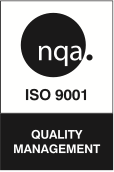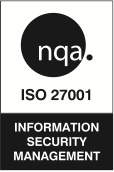‘Look and feel’ (signal the eye rolling of every designer ever) is a buzz-phrase used by many within the software industry. It generally refers to the ‘design’ of a piece of software, website or application and whilst the language might be a little crude it actually doesn’t do a bad job of setting us on the right road to describe the difference between UI (user interface) and UX (user experience) design.
If you want something a little more pithy the Nielsen Norman Group would describe user experience as the complete end-to-end experience, and everything in between, that an end-user has when they encounter your product or service.
What it’s not
The term UX design has gotten a little ‘muddy’ over the past few years and the responsibilities and daily tasks of a UX designer can be wildly varied in scope. We’ll explore the nuts and bolts of what a UX designer does in another article but I’ll start by giving you my two cents of what I think UX design isn’t and we’ll work from there.
I mentioned UI (user interface) in the opening paragraph, which is of course the pixels that the end user sees and interacts with. Well it’s not that. Although that’s obviously a hugely important part of the overall experience. It’s also not wireframes, personas, journey maps or user flows although these are all outputs of the process. It’s not A/B testing, card sorting or empathy mapping although again, they can be great tools in the toolkit of any UX designer.
At its core UX design is about making design decisions using data rather than subjective opinions. Each step of the process tries to unearth more data that can be fed into the design process. User research helps us figure out who the users are, what the problem is and provides a steer on what might be the best way to solve it. Visual artefacts like wireframes and prototypes turn this into a tangible solution and user testing validates whether it works or not. Sounds simple doesn’t it!
Why it’s so important
“Give me six hours to chop down a tree and I will spend the first four sharpening the axe”
Abraham Lincoln
This analogy might be a stretch but bear with me. If we don’t spend enough time doing proper UX work (sharpening the axe) then the experience of cutting down that tree (or using the software) is going to be fraught with difficulty. Perfect design can never be guaranteed but UX stacks the odds of delivering a great experience firmly in your favour.
The benefit of UX design in business, both consumer facing and internal, is well documented. User-centric companies outperform their counterparts by nearly twice as much in terms of revenue. There’s a reason why UX jobs ranked number #24 out of 50 among Glassdoor’s recent best jobs in America list and why the average salary for a UX designer in the US is nearly $100,000. The reasoning is simple, UX design leads to happier users and happier users lead to a better bottom line.
What does a UX process look like?
There are many different versions of what a UX process should look like and every company will have a slightly different take on theirs. There is commonality however between the majority of UX processes, in truth most can be simplified back to a process taken from the world of ‘design thinking’ (more on that some other day). Here’s what the process looks like at GCD;
- Discovery (User Research)
- Definition (Ideating Solutions)
- Design (Designing outputs)
- Testing (Validate that it works)
The stage you begin is often changeable depending on the situation. The tasks involved in each stage can also vary, depending on the context, scope and scale of the project.
How to take the next steps towards UX nirvana?
The first commandment – Talk to your users
Let’s get this out of the way first. Interaction with your end-users (on a consistent basis) should be non-negotiable. You cannot expect to deliver excellent user experience without an in-depth understanding of those users. It doesn’t have to be expensive, it doesn’t have to be difficult and it doesn’t have to be scary but it’s essential if you create a good user experience.
Get to the facts – Research and Testing
It’s a point that has generated some prickly conversation within the UX community but my flag is firmly pitched within the good ol’ camp of “it’s not UX design if you’re not doing research and testing”. Personas and journey maps are a waste of time without actually doing the legwork to understand who the users are and what drives them. Anything short of that is pure guesswork.
How can you ever know what the user experience is like if you’ve never actually ‘experienced’ someone using your software? It might seem obvious that you can’t ‘do’ UX without users but the sad fact is that often more effort is placed on the creation of deliverables like wireframes and journey maps without any research to back them up. This might feel like UX design but it’s really only paying lip service to a proper user-centered approach.
UX Design – The silver bullet?
Hopefully this whistle stop summary of UX design has at least peaked your interest in the subject. As a designer I am of course biased but I’m not alone in my opinion that UX design can act as a real differentiator in our world with an ever increasing commoditisation of technology.
Here’s a few more recommendations to help you on your way to seamless user experience;
- Put less distance (metaphorically speaking) between you and your end users
- Carry out a UX audit on your software or application.
- Embrace research and data
- Sit down and watch someone use your software
- Map your main user journeys
- Focus on the most frustrating areas of those journeys
- Let the data drive your design decisions
- Assume you’re wrong – put subjective opinion to one side and get to the facts!


